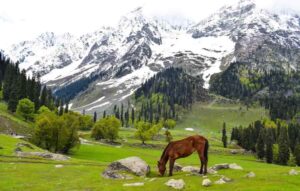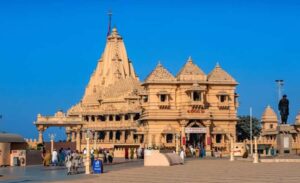Dussehra Festival, India
Dussehra, also known as Vijayadashami, is one of the most widely celebrated festivals in India. It holds immense historical and cultural significance and is celebrated with great enthusiasm and fervor throughout the country. This festival marks the triumph of good over evil and is associated with various mythological and historical events. In this comprehensive article, we will delve into the history, significance, puja rituals, and the grand celebrations of Dussehra, providing a detailed understanding of this remarkable festival.

History and Mythological Significance
The Legend of Lord Rama
Dussehra primarily commemorates the victory of Lord Rama over the demon king Ravana, as narrated in the ancient Indian epic, the Ramayana. According to the legend, Ravana had kidnapped Lord Rama’s wife, Sita, and took her to his kingdom of Lanka. Lord Rama, along with his loyal brother Lakshmana and an army of monkeys led by Hanuman, waged a fierce battle against Ravana. After a ten-day war, Lord Rama vanquished Ravana, symbolizing the victory of righteousness over evil. The day of Lord Rama’s return to Ayodhya after this victory is celebrated as Dussehra.
The Triumph of Goddess Durga
In some regions of India, Dussehra is celebrated to commemorate the victory of Goddess Durga over the buffalo demon Mahishasura. According to Hindu mythology, Mahishasura was a formidable demon who could change his form at will. Goddess Durga, with her divine powers and weapons, defeated Mahishasura after a prolonged battle, thus symbolizing the victory of good over evil. This victory is celebrated during the nine-day festival of Navaratri, which culminates on Dussehra.
The Significance of the Number Ten
The word “Dussehra” itself is derived from two Sanskrit words: “Dasha” meaning ten and “Hara” meaning defeat. It signifies the ten-headed Ravana’s defeat by Lord Rama and the ten-day battle between Goddess Durga and Mahishasura during Navaratri.
Significance and Symbolism of Dussehra
Victory of Good over Evil
The central theme of Dussehra is the triumph of good over evil. It serves as a reminder of the eternal battle between righteousness and wickedness and encourages people to choose the path of virtue and righteousness.
Religious and Spiritual Significance
Dussehra is a time for spiritual reflection and renewal of one’s faith. Devotees seek blessings from Lord Rama and Goddess Durga for inner strength and moral courage to face the challenges of life.
Symbol of Unity and Diversity
Dussehra is celebrated by people from various religious and cultural backgrounds in India. It promotes unity and diversity, as people of different regions come together to celebrate the victory of good.
Agricultural Significance
In some parts of India, Dussehra marks the end of the monsoon season and the beginning of the harvest season. Farmers worship their tools and cattle, seeking a prosperous harvest ahead.
Dussehra Puja Rituals
Ramlila Performances
One of the most popular aspects of Dussehra celebrations is the enactment of the Ramayana through “Ramlila” performances. These performances, often spanning several days, reenact key episodes from Lord Rama’s life, including his victory over Ravana. They serve as a source of entertainment and education for the masses.
Puja of the Weapons
In some regions, especially in North India, it is customary to worship weapons on Dussehra. Swords, bows, arrows, and other weapons are cleaned and decorated before being placed on a platform and worshipped as a symbol of protection.
Offering Prayers to the Deities
Devotees visit temples dedicated to Lord Rama and Goddess Durga to offer prayers and seek their blessings. Special pujas and aartis (devotional songs) are performed during this time.
Burning Effigies of Ravana
A prominent tradition during Dussehra is the burning of large effigies of Ravana, his brother Kumbhakarna, and his son Meghanada (also known as Indrajit). These effigies are filled with fireworks and set ablaze, symbolizing the destruction of evil forces.

Dussehra Celebrations Across India
North India
In North India, especially in states like Uttar Pradesh and Delhi, Dussehra is celebrated with grand processions and Ramlila performances. The burning of Ravana’s effigy is a spectacular event that draws large crowds.
South India
In the southern states of India, Dussehra is often associated with the worship of Goddess Saraswati, the deity of knowledge, arts, and music. It is a time for cultural performances and the initiation of education for young children.
East India
In West Bengal, Dussehra coincides with the Durga Puja festival, which is celebrated with great pomp and splendor. Elaborate idols of Goddess Durga are created, and processions are held before immersing the idols in rivers or lakes.
West India
In the western state of Gujarat, Dussehra is synonymous with the Navaratri festival, a nine-night celebration of dance and music. People participate in energetic Garba and Dandiya Raas dances, showcasing their devotion to Goddess Durga.
Central India
In Madhya Pradesh, Dussehra is celebrated with traditional fervor. People exchange gifts, visit temples, and participate in cultural events. It is also a time when artisans and craftsmen showcase their skills.
Conclusion
Dussehra is a festival deeply ingrained in the cultural and religious tapestry of India. It reflects the timeless values of righteousness, courage, and the victory of good over evil. The celebration of Dussehra varies across different regions of India, showcasing the country’s diversity and rich cultural heritage. This festival not only brings joy and merriment but also serves as a reminder of the importance of upholding moral values and ethics in our lives. As people come together to celebrate Dussehra, they strengthen their bonds, promote unity, and pray for a brighter and more virtuous future.








